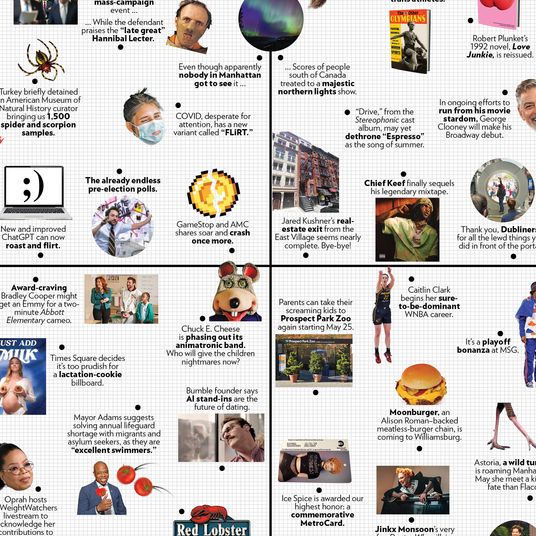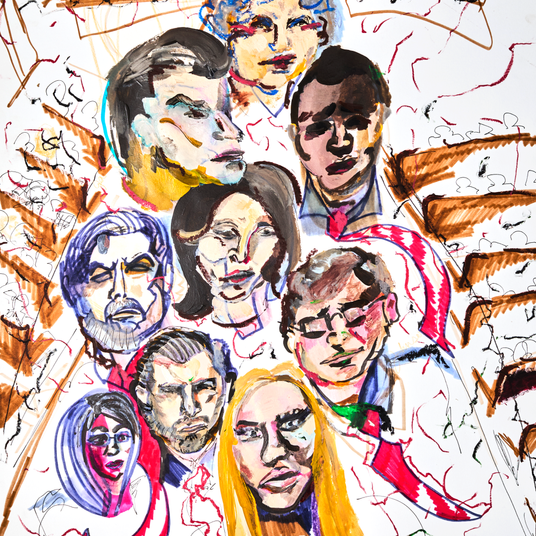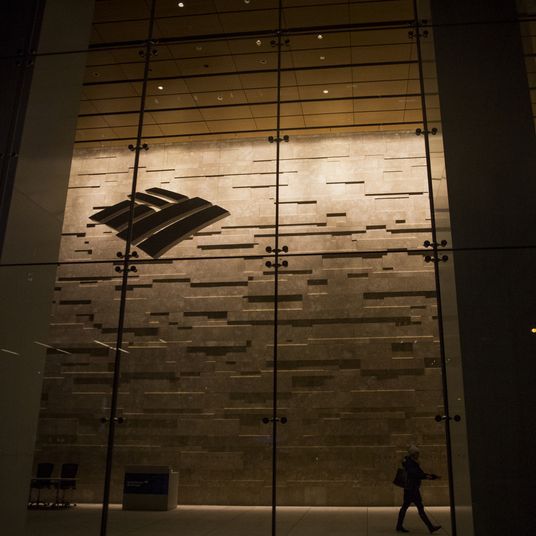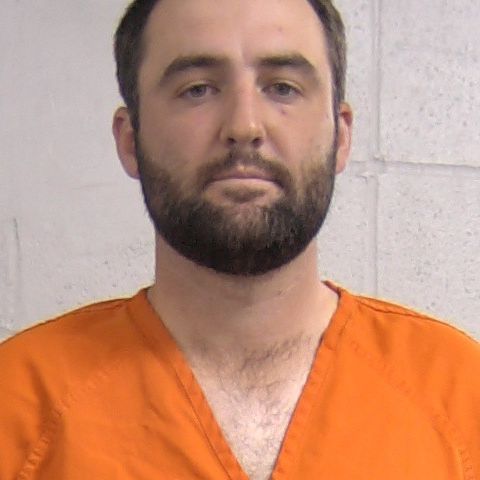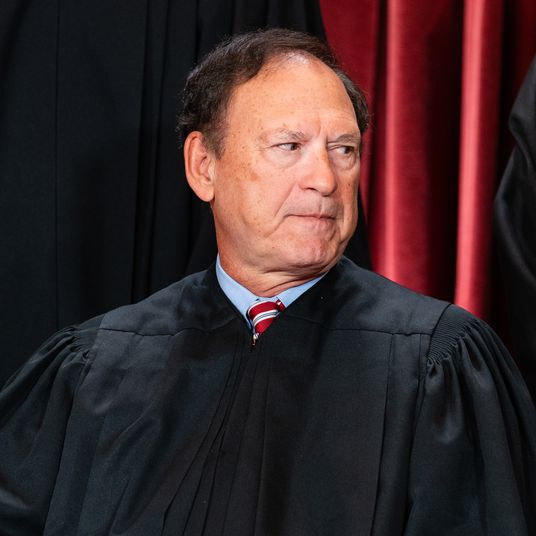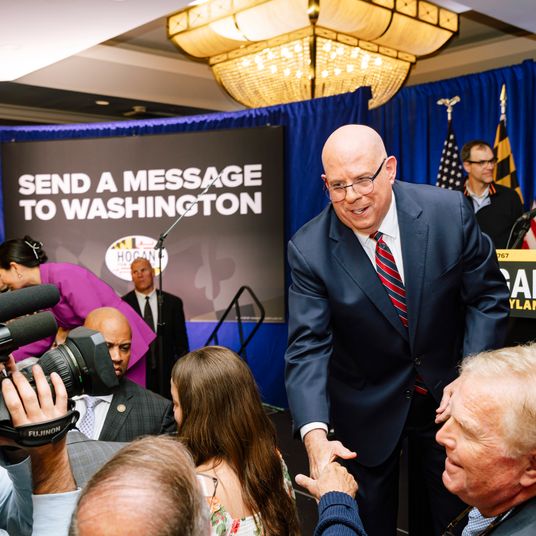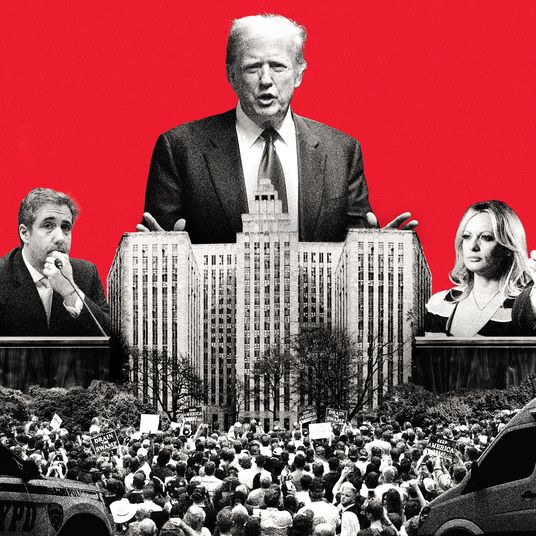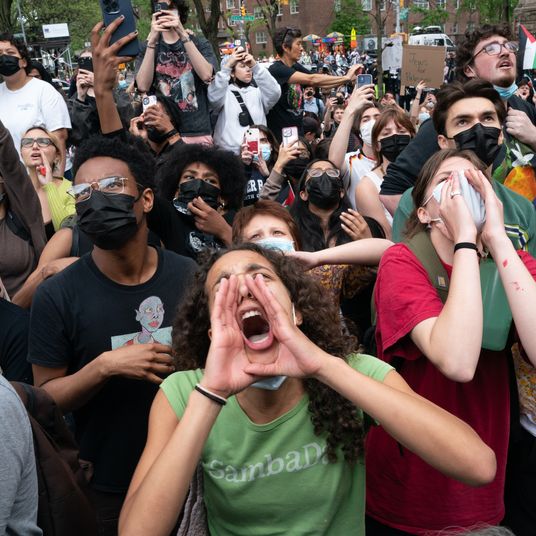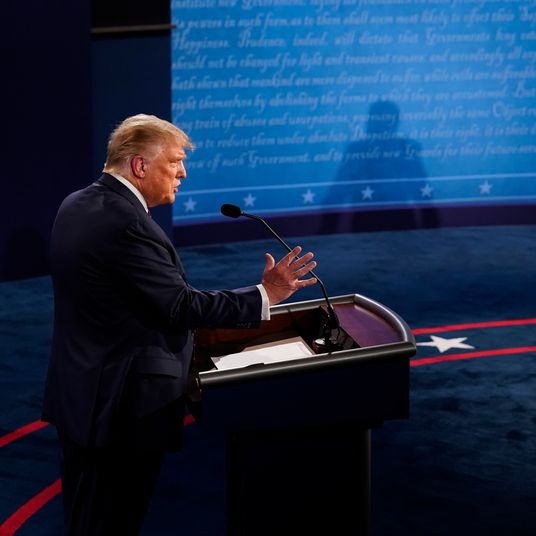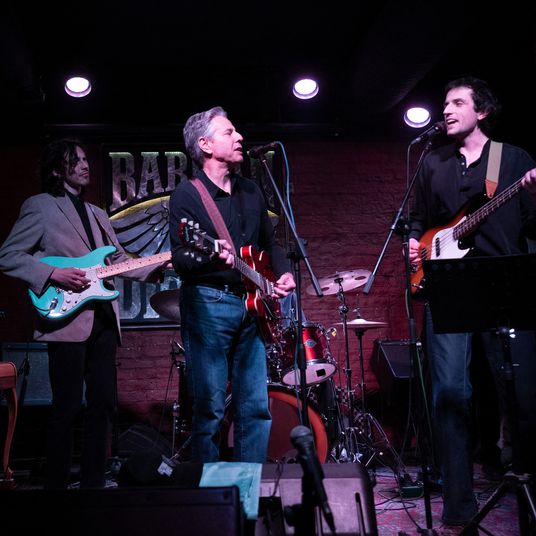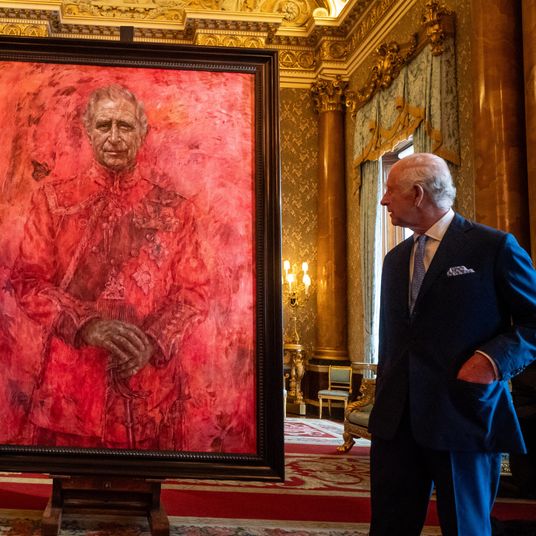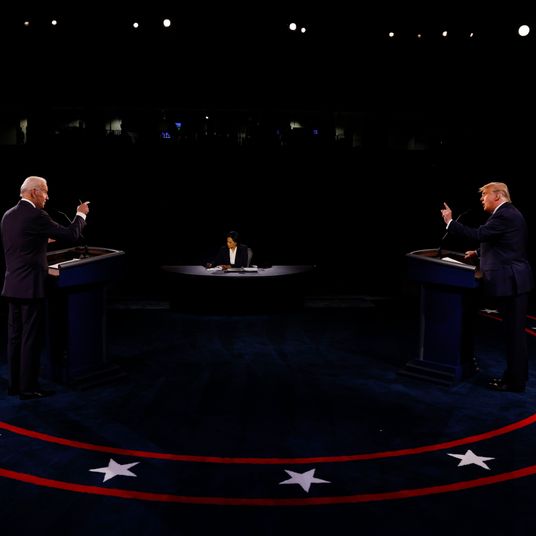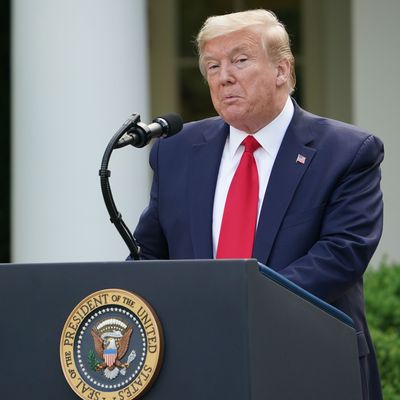
We’re committed to keeping our readers informed.
We’ve removed our paywall from essential coronavirus news stories. Become a subscriber to support our journalists. Subscribe now.
To get to the White House Rose Garden during the pandemic, you first walk through a tent outside of the grounds, where your temperature is checked, and then stop just through the Palm Room doors, between the East Wing and the West Wing, where your temperature is checked again. A staffer hands you a little white sticker with the date, which you wear to confirm that you’re not feverish, before you step out into the semi-socially distanced patch of greenery, outfitted with folding chairs staggered a few feet apart (though not the recommended six).
On Monday afternoon, after first scheduling a coronavirus task force briefing in the James S. Brady briefing room, canceling it, and then rescheduling it to take place outside, I found my assigned seat toward the back, a few rows from the presidential podium. Members of the task force streamed out of the Oval Office and assembled up front. Then the door cracked open again, a pale hand visible on the knob. It stayed like that for a moment. A voice came over the loudspeaker. “Ladies and gentlemen,” said the voice, “the president of the United States.” The door swung open fully and Donald Trump made his way to the microphone.
Before the questions started, as I watched the president and the executives and Dr. Deborah Birx speak, I imagined how this appeared to the rest of America, watching from home.
Over the weekend, the COVID-19 death toll climbed past 50,000, and Trump passed the time on Twitter complaining about the press. For more than a month, he’d devoted upward of two hours each day to the coronavirus briefings, which he took over from Vice-President Mike Pence after becoming frustrated by how much attention his deputy was receiving. The briefings started late and went on long, and the news he made therein defined much of the media coverage of his response to the pandemic.
The events showcased how much the crisis hasn’t changed Trump, even as he attempted to cast himself as a wartime president, fighting against the “invisible enemy” that he had, just recently, dismissed and ignored. He hadn’t pivoted or made that fabled “presidential” metamorphosis. He was still going off on tangents, attacking reporters and mocking Mitt Romney and saying all sorts of false and misleading things about voter fraud and what a great job he was doing and how he’d created the greatest economy in the history of the world.
But it wasn’t until last Thursday, when he falsely suggested the virus could be treated by injecting disinfectants, that the partisan divide in the country seemed to bridge on at least this one subject: Trump shouldn’t be briefing. Or, if he is briefing, it shouldn’t be carried live by television networks. Throughout the spring, liberals had publicly campaigned against the briefings while, in private and sometimes meekly out loud, the president’s Republican allies in Washington urged him to make them shorter, or not appear at all. Most networks began cutting away from them instead of airing them in their entirety. This was based on the belief that Trump was spewing self-serving lies and giving him a platform to do so was journalistically imprudent. Starve the president of the attention he craves, the argument goes, and it will prevent him from disseminating false and dangerous theories to the public. In the New York Times, Charles Blow wrote that airing the briefings was “lazy and irresponsible.” Ted Koppel said the press was not obligated to broadcast them. Even Jerry Springer agreed, warning that “some people are crazy enough to listen to the president and they’re the ones going out there spreading the disease.” Thursday’s disinfectant debacle seemed to convince Trump — momentarily — that the briefings might not be in his best interest. On Friday, Axios reported that he’d be paring back his presence at the events, prompting many sighs of relief.
Can the press protect the American people from the president? Should we?
No.
Just like the reality-TV contestants who have walked the corridors of Trump’s West Wing, I’m not here to make friends. If members of the press endeavor to do so, I believe we’d more likely be protecting the president from himself, while helping him prove that the press condescends to the public it claims to serve.
What a lot of Trump critics miss is that the biggest threat to his presidency isn’t the pandemic and the collapse of the global economy. It’s Trump. The more we see him — rambling, ranting, casually spitballing about bleach and sunlight — the clearer that becomes. But that’s not the media’s problem, and taking the spotlight off of him as he displays the full extent of his inadequacies would only serve to help him and to make the public less informed about what the federal government is doing — or not doing.
Watching Trump dangerously improvise is, in itself, information. It’s pure access to his thoughts and ideas and emotional state, presented to the world in real time. Trump’s presence at the briefings is not valuable if what we hope to get from them is factual information about the pandemic. But if we want to learn more about what the government is doing, and why it’s doing what it’s doing, what could be better than this? We should think of the briefings as opportunities to observe the president and gauge his level of understanding of, and interest in, the crisis each day — to watch the reality show of his relationships with the members of his task force play out before our eyes, rather than reported on later through palace-intrigue stories informed by anonymous sources who half the country doesn’t believe exist.
White House staffers and defenders of the president are not wrong when they point out that, on the topic of media access, the press has never been satisfied. For all of his faults, it’s true that Trump is more accessible to the media than any other modern president. When there were regular briefings, we were right to complain about the lies that were told by officials at the podium. When the briefings stopped, we were right to complain about the lack of information coming from the White House. But now that the president himself is answering questions on a near-daily basis, we’re getting exactly what we want: a window into the president’s mind, transmitted directly from the president’s mouth and into our microphones.
In September, Lenore Taylor, the Guardian’s Australia editor, wrote about the experience of viewing a Trump press conference in full for the first time while visiting the United States. Taylor said it was a “shock” to endure 30 minutes of “unfiltered meanderings” because when Trump’s words are processed through the media, the effect is that Trump sounds more coherent than he is. “I realized how much of the reporting of Trump necessarily edits and parses his words, to force it into sequential paragraphs or impose meaning where it is difficult to detect.” Taylor said she was left wondering “whether the editing does our readers a disservice.”
I’ve thought about Taylor’s column a lot since it was published. I first started covering Trump in 2014, and I’ve spent what amounts to a considerable portion of my life listening to and observing him as he speaks. I’ve wondered, just as my colleagues no doubt have, how we can cover him more effectively, what mistakes we made in 2016, and how those mistakes can be avoided again. I’ve heard many of the same arguments made by media critics during that election made again today, applied to the briefings. But those who argue that airing the president in full when he speaks at length at a briefing or a rally is invaluable “free media” that gives him an unfair advantage suppose, as the president does, that all press is good press, that any attention is helpful to him in spreading his message and misinformation.
But to watch Trump speak, uninterrupted by TV hosts and pundits, is to understand that he does not have a message, that the stray sentences he formulates which do articulate a belief of some kind are anomalies, and he is likely to muddy their meaning in the next breath, or bury it with a series of half-formed thoughts and throwaway verbal crutches — many people are saying, some people would say, if you can believe it, and so on. And when we extract his words in clips or quotes in news articles, when we divorce them from their rambling context to place them in the context of the real world, and his real record, we are also helping him articulate a semi-coherent worldview and ideology when there usually isn’t one. We are aiding and abetting him in the creation of a message, and giving the voting public the option to abstain from sitting through his endless yapping to discern his meaning for themselves.
A viewer, hearing the president in full, would likely struggle to notice or take seriously that stray sentence which articulates a belief, sandwiched between a dozen other thoughts spewing from his mouth at rapid speed and inhuman cadence. Even when we place the belief in context, when we explain that he’s often expressed the opposite sentiment, or that his actions contradict his words, we’re not revealing Trump to those inclined to believe him over the fake news media.
For a Republican voter who has been able to stomach the Trump presidency because of tax reform, or the reconfiguration of the courts, but who ignores his tweets and opts out of attending his rallies, I imagine it’s much easier to tolerate the president’s words when they are distilled into proper sentences and coherent thoughts by the media. I imagine it would be less tolerable to have to hear it straight from the rambling horse’s mouth. When you listen to what he says, and how he says it, you are confronted by his insanity in a way that is more powerful, and harder to ignore, than hearing a cable-news analyst or reporter explain to you why you shouldn’t take him seriously, why it would be stupid to do so, when he’s lied or been wrong about X, Y, or Z so many times before.
I’m not arguing we do away with fact-checking and reporting on context. I’m arguing that the supposed danger of first allowing the public to hear the president as the press assembled before the podium does is probably not much of a danger at all.
So show Trump as he is, in all of his contradictions and incoherence. The American people can handle it — they may just not want to.
At the end of Monday’s briefing, Trump called on me. I asked him if a president should be reelected if he loses more Americans in six weeks than died in the entirety of the Vietnam War. He took the question seriously, though — Trump being Trump — he wandered off the topic to praise himself. He admitted that a lot of people have died. As he spoke, there was something unusual about his face. He seemed sad, not angry.
He took no more questions.






